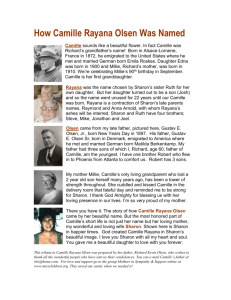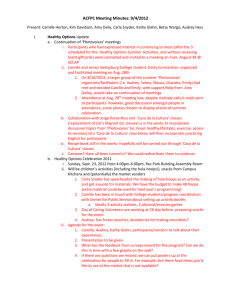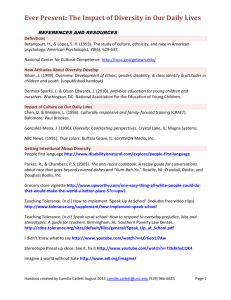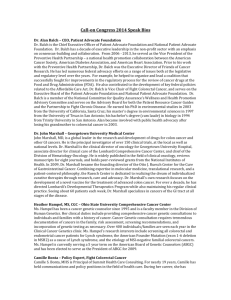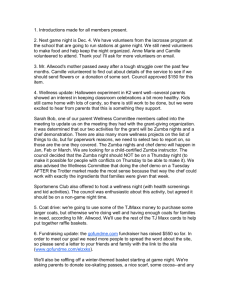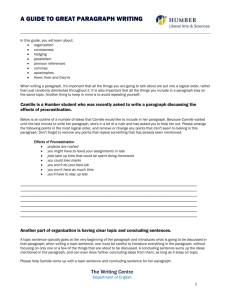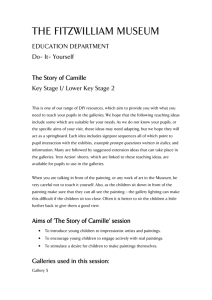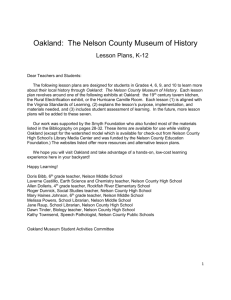Hurricane Camille: Part 3 – Camille`s Toll
advertisement
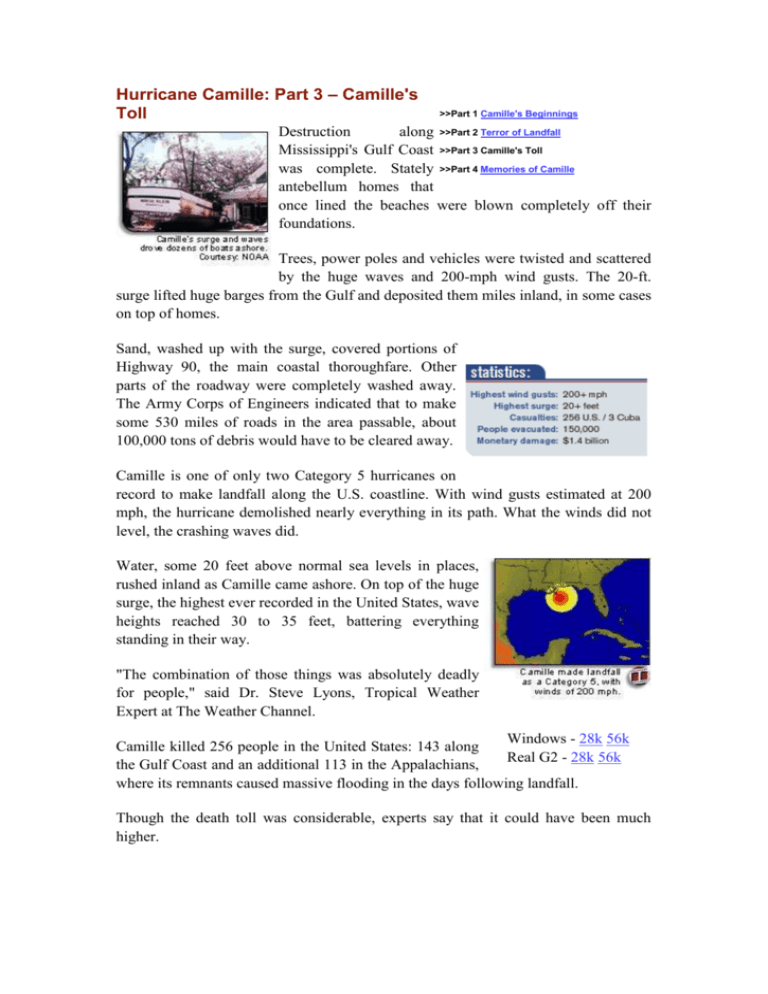
Hurricane Camille: Part 3 – Camille's Toll >>Part 1 Camille's Beginnings Destruction along >>Part 2 Terror of Landfall Mississippi's Gulf Coast >>Part 3 Camille's Toll was complete. Stately >>Part 4 Memories of Camille antebellum homes that once lined the beaches were blown completely off their foundations. Trees, power poles and vehicles were twisted and scattered by the huge waves and 200-mph wind gusts. The 20-ft. surge lifted huge barges from the Gulf and deposited them miles inland, in some cases on top of homes. Sand, washed up with the surge, covered portions of Highway 90, the main coastal thoroughfare. Other parts of the roadway were completely washed away. The Army Corps of Engineers indicated that to make some 530 miles of roads in the area passable, about 100,000 tons of debris would have to be cleared away. Camille is one of only two Category 5 hurricanes on record to make landfall along the U.S. coastline. With wind gusts estimated at 200 mph, the hurricane demolished nearly everything in its path. What the winds did not level, the crashing waves did. Water, some 20 feet above normal sea levels in places, rushed inland as Camille came ashore. On top of the huge surge, the highest ever recorded in the United States, wave heights reached 30 to 35 feet, battering everything standing in their way. "The combination of those things was absolutely deadly for people," said Dr. Steve Lyons, Tropical Weather Expert at The Weather Channel. Windows - 28k 56k Camille killed 256 people in the United States: 143 along Real G2 - 28k 56k the Gulf Coast and an additional 113 in the Appalachians, where its remnants caused massive flooding in the days following landfall. Though the death toll was considerable, experts say that it could have been much higher. In 1969, weather reports on television were much different than they are today. The general public did not have access to satellite images, so "people didn't really see this monster coming at them," Lyons said. Luckily, the area where Camille came ashore was "not hugely populated," Lyons said. "People were not aware of the potential of what could happen." Camille caused more than $1.4 billion in damage from the Gulf Coast to the Appalachians. Mississippi absorbed the brunt of Camille's destruction. The hurricane decimated the state's entire coast, with destruction stretching three to four blocks inland. Roadways were impassible and several bridges, including the Bay St. Louis Bridge and the Biloxi-Ocean Springs Bridge, were severely damaged by the rushing water. Camille reduced hundreds of beach homes near Clermont Harbor to piles of debris. The mayor of Poplarville, Miss., estimated that Camille had damaged 90% of the town's homes to some degree. By the time Camille reached the Mississippi/Tennessee border, it had weakened to a tropical depression, but its destruction was far from over. The remnants of the hurricane traveled northeastward, crossing Kentucky, Tennessee and Ohio before reaching West Virginia and extreme southern Virginia. Late Tuesday, August 19, Tropical Depression Camille dropped torrential rains on the eastern slopes of the Blue Ridge Mountains that lasted for eight hours. Flash floods and landslides ensued, as did record flooding in Virginia's James River Basin. The floods were the worst natural disaster Virginia had ever seen. Communication links, including all but one of the state's highways, were cut. More than 100 people died with many more reported injured and missing. Camille's total damage in Virginia topped $19 million.
